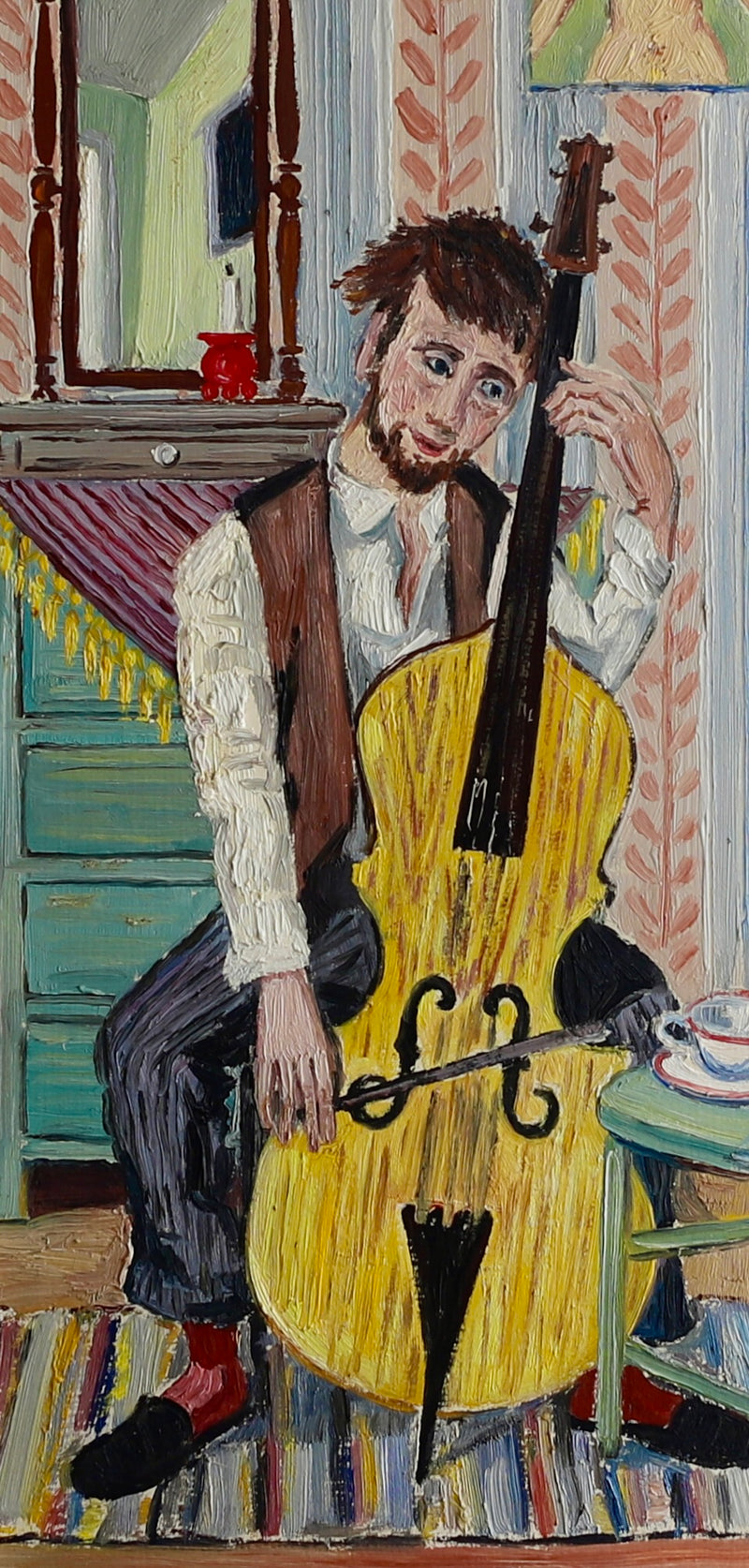How Figurative Oil Painting Transforms Conventional Artistic Expression
How Figurative Oil Painting Transforms Conventional Artistic Expression
Blog Article
A Journey Via the World of Metaphorical Oil Paint: Discovering the One-of-a-kind Attributes and Psychological Depth of the Tool

History of Figurative Oil Painting
Emerging during the late Middle Ages and flourishing throughout the Renaissance, figurative oil paint has an abundant background that shows both creative development and cultural evolution. Oil paints were utilized in Europe as a means to improve the brightness and depth of shade in art work. Artists such as Jan van Eyck pioneered the tool, showing its potential to capture detailed information and structures, thus allowing for an extra realistic representation of the human form.
As the Renaissance proceeded, distinguished figures like Leonardo da Vinci and Michelangelo expanded the borders of figurative oil painting. They stressed anatomical precision and point of view, creating jobs that communicated emotion and narrative deepness. The medium's versatility permitted testing with light and darkness, causing the development of chiaroscuro strategies that even more improved the visual experience.
Unique Attributes of the Medium
The advancement of figurative oil paint has been dramatically influenced by the one-of-a-kind qualities of the tool itself. Oil paint, composed of pigments put on hold in oil, offers artists an exceptional adaptability that enables a vast variety of finishes and appearances. Its sluggish drying out time makes it possible for precise mixing and layering, which can produce deepness and brightness unattainable in various other mediums.
In addition, oil paint's rich coloring provides dynamic shades that maintain their intensity gradually. This particular is important in metaphorical paint, where capturing the nuances of complexion and psychological expressions is paramount. The capability to attain refined gradients and soft transitions enhances the lifelike high quality of topics, permitting musicians to convey complex moods.
Furthermore, oil paint sticks well to numerous surfaces, such as timber, steel, and canvas, broadening the range of creative expression. The tool's adaptability sustains various strategies, from detailed realism to meaningful brushwork, enabling musicians to discover their specific designs.
Ultimately, the unique homes of oil paint not only enrich the aesthetic experience yet likewise equip artists to communicate extensive narratives, making figurative oil paint a deeply expressive art form.
Techniques and Designs Used
Within the world of figurative oil paint, artists employ a varied variety of techniques and designs that add to the depth and splendor of their work. One prominent strategy is glazing, where transparent layers of paint are used over dried layers, permitting light to mirror and permeate, boosting brightness and depth. This approach is typically used to accomplish a sense of realistic look and complexity in complexion.
An additional method is impasto, where thick layers of paint are used with a scheme knife or brush, creating a textured surface area that adds a three-dimensional top quality to the painting. This design can stimulate a visceral response, drawing the visitor in with its responsive nature.
Artists additionally explore different brushwork styles, from fine, thorough strokes that capture detailed features to wider, more expressive strokes that share movement and feeling (figurative oil painting). The selection of color combination significantly influences the general state of mind of a piece, with warm tones usually passing on sensations of convenience and awesome tones suggesting melancholy
Furthermore, the assimilation of chiaroscuro, the comparison between light and shadow, enables musicians to develop dramatic impacts that improve the narrative top quality of their job. Each technique and style is very carefully picked to boost the viewer's experience and understanding.
Emotional Depth in Figurative Art
Psychological deepness works as a keystone in metaphorical art, allowing artists to transcend mere representation and engage customers on an extensive degree. This psychological vibration is usually attained with the nuanced portrayal of human figures, expressions, and interactions. Artists harness the power of color, shadow, and light to evoke feelings that resonate deeply with the audience, creating a visceral link to the topic.
In metaphorical oil paint, the detailed layering of paint can mirror the intricacies of human emotion. The option of palette, whether awesome or warm, plays an essential role in setting the state of mind and ambience of an item. As an example, softer shades may stimulate peace and self-contemplation, while strong, contrasting colors can connect stress and drama.

Influential Artists and Their Functions
Various significant artists have dramatically shaped the landscape of figurative oil paint, each contributing distinct viewpoints and techniques that continue to motivate modern creators. Among these musicians, Lucian Freud stands out for his intense mental deepness and raw representation of the human form, commonly obscuring the lines in between beauty and decay. Freud's jobs, identified by thick, impasto brushstrokes, welcome viewers to confront the complexities of identification and susceptability.

In A Similar Way, Andrew Wyeth's thorough realistic look in items like "Christina's World" captures extensive stories within relatively basic structures. His use of light and darkness stimulates a sense of nostalgia and psychological vibration, drawing viewers right article source into the intimate worlds he portrays.
In the world of modern-day art, Kehinde Wiley has gained recognition for his lively, larger-than-life portraits that test conventional notions of depiction. By putting people of shade in contexts similar to classical portrait, Wiley's work redefines the canon of art background.
These musicians, alongside others, have not just enriched figurative oil paint however have additionally broadened published here the discussion surrounding identity, society, and emotion, guaranteeing that the tool remains an essential type of expression in the art globe. figurative oil painting.
Final Thought
In verdict, figurative oil painting stays an effective tool that envelops the complexities of human emotion with its rich coloring and functional strategies. The journey through figurative oil painting exposes its long-term significance in the art world.
The exploration of figurative oil painting uses an extensive understanding right into the interaction of strategy, feeling, and historic context that specifies this venerable tool. Oil paint, composed of pigments suspended in oil, offers artists an amazing flexibility that enables for a large variety of surfaces and structures.Within the world of figurative oil painting, artists employ a diverse array of techniques and designs that add to the deepness and splendor of their work.Various prominent artists have significantly formed the landscape of metaphorical oil paint, each adding distinct point of views and techniques that continue to motivate modern designers.In final thought, figurative oil paint continues to be an effective medium that envelops the intricacies of human feeling through its rich coloring and flexible methods.
Report this page